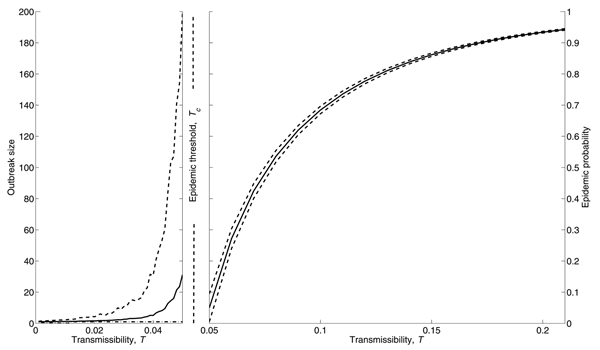Volume 11, Number 8—August 2005
Research
Modeling Control Strategies of Respiratory Pathogens
Figure 7

Figure 7. . Left panel: variation of outbreak sizes as a function of transmissibility. We generated 1,000 epidemics for each of 20 values of T from 0 to the epidemic threshold. The solid curve represents the mean of outbreak size (m), the dashed curve represents 1 standard deviation above the mean (m + s), and the dotted line at the bottom shows the minimum size of an outbreak, which is always equal to 1, meaning that after the introduction of the first infected case the disease did not spread further. Right panel: sensitivity of epidemic probability to network stochasticity. We generated 100 different networks, each with 2,000 households. Because of the stochastic nature of contact formation during network generation, these 100 networks contain different numbers and configurations of edges and therefore have different degree distributions. The solid curve shows the mean probability of an epidemic across the 100 networks for transmissibilities above the epidemic threshold, and the dashed curves are 95% confidence limits for the mean probability of an epidemic.
1These authors contributed equally to this work.
2For the purposes of this manuscript, "airborne" refers to respiratory pathogens that are spread through respiratory secretions and can be either airborne, such as tuberculosis, or dropletborne, such as SARS.